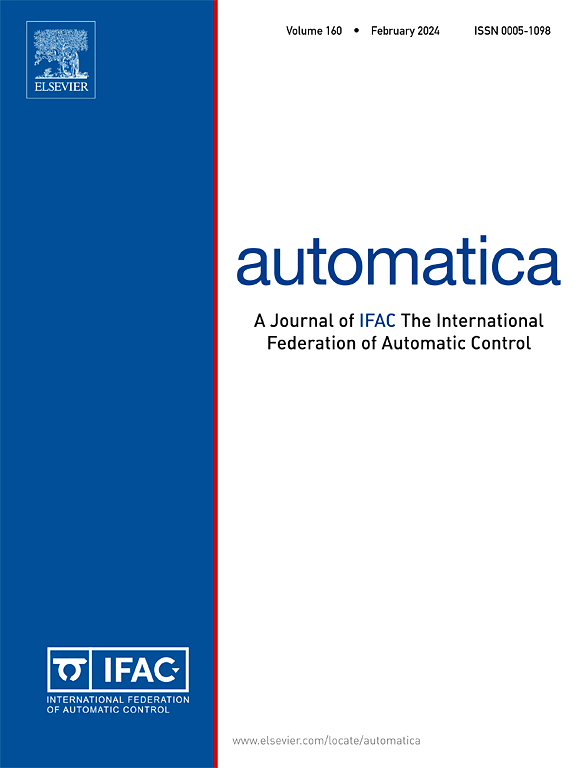Prescribed performance tracking of uncertain high-order MIMO time-dependent impulsive pure-feedback systems
IF 4.8
2区 计算机科学
Q1 AUTOMATION & CONTROL SYSTEMS
引用次数: 0
Abstract
We consider uncertain, MIMO, high-order, pure-feedback systems, affected by possibly aperiodic, time-dependent impulses at the state. The frequency of the impulsive sequence is bounded, yet the exact impulse time instants are unknown in advance. The proposed control solution is constructive and guarantees convergence of the tracking error to a residual set of pre-selected size, within a predefined fixed-time. Moreover, all signals in the closed-loop are bounded. Furthermore, no approximation structures are utilized, no hard calculations, analytic or numerical, are required to produce the control signal, and the dynamic order of the closed-loop is not extended, thus forming a low-complexity control solution. Simulation results clarify and verify the theoretical findings.
不确定高阶 MIMO 时变脉冲纯反馈系统的规定性能跟踪
我们考虑不确定,MIMO,高阶,纯反馈系统,可能受到非周期,时变脉冲在状态的影响。脉冲序列的频率是有界的,但准确的脉冲时间瞬间是事先未知的。所提出的控制方案是建设性的,并保证跟踪误差在预定义的固定时间内收敛到预先选择大小的残差集。而且,闭环中的所有信号都是有界的。此外,不使用近似结构,不需要解析或数值的硬计算来产生控制信号,并且不扩展闭环的动态阶数,从而形成低复杂度的控制解。仿真结果阐明并验证了理论结果。
本文章由计算机程序翻译,如有差异,请以英文原文为准。
求助全文
约1分钟内获得全文
求助全文
来源期刊

Automatica
工程技术-工程:电子与电气
CiteScore
10.70
自引率
7.80%
发文量
617
审稿时长
5 months
期刊介绍:
Automatica is a leading archival publication in the field of systems and control. The field encompasses today a broad set of areas and topics, and is thriving not only within itself but also in terms of its impact on other fields, such as communications, computers, biology, energy and economics. Since its inception in 1963, Automatica has kept abreast with the evolution of the field over the years, and has emerged as a leading publication driving the trends in the field.
After being founded in 1963, Automatica became a journal of the International Federation of Automatic Control (IFAC) in 1969. It features a characteristic blend of theoretical and applied papers of archival, lasting value, reporting cutting edge research results by authors across the globe. It features articles in distinct categories, including regular, brief and survey papers, technical communiqués, correspondence items, as well as reviews on published books of interest to the readership. It occasionally publishes special issues on emerging new topics or established mature topics of interest to a broad audience.
Automatica solicits original high-quality contributions in all the categories listed above, and in all areas of systems and control interpreted in a broad sense and evolving constantly. They may be submitted directly to a subject editor or to the Editor-in-Chief if not sure about the subject area. Editorial procedures in place assure careful, fair, and prompt handling of all submitted articles. Accepted papers appear in the journal in the shortest time feasible given production time constraints.
 求助内容:
求助内容: 应助结果提醒方式:
应助结果提醒方式:


